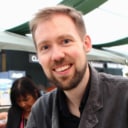Free and open-source software is driving physics forwards
I
n this episode of the Physics World Stories podcast you will hear from scientists and software engineers at the vanguard of developing free and open-source software for physics research. Guests talk about the role of open software in astronomical imaging, the search for dark matter, medical physics and other fields. Software also plays a big role in the wider open-science movement but there are ongoing debates around how to provide suitable recognition to software developers who have contributed to scientific breakthroughs.Featuring the following guests:Kirstie Whitaker, director of the Tools, Practices and Systems research programme at the Alan Turing Institute in LondonTim Smith, head of collaboration, devices and applications group at CERNKatie Bouman – computer scientist at Caltech, whose algorithms helped to transform data from the Event Horizon Telescope into the first ever image of a black holeSuchita Kulkarni, a particle physicist at the University of Graz, AustriaJuanjo Bazán, an astrophysicist from the Center for Energy, Environmental and Technological Research in Madrid, Spain.
Find out more by reading ‘Standing on the shoulders of programmers: the power of free and open-source software’, originally published in the September issue of Physics World.
 James Dacey is a multimedia journalist based in Madrid
James Dacey is a multimedia journalist based in Madrid
I
n this episode of the Physics World Stories podcast you will hear from scientists and software engineers at the vanguard of developing free and open-source software for physics research. Guests talk about the role of open software in astronomical imaging, the search for dark matter, medical physics and other fields. Software also plays a big role in the wider open-science movement but there are ongoing debates around how to provide suitable recognition to software developers who have contributed to scientific breakthroughs.
Featuring the following guests:
Kirstie Whitaker, director of the Tools, Practices and Systems research programme at the Alan Turing Institute in London
Tim Smith, head of collaboration, devices and applications group at CERN
Katie Bouman – computer scientist at Caltech, whose algorithms helped to transform data from the Event Horizon Telescope into the first ever image of a black hole
Suchita Kulkarni, a particle physicist at the University of Graz, Austria
Juanjo Bazán, an astrophysicist from the Center for Energy, Environmental and Technological Research in Madrid, Spain.
Find out more by reading ‘Standing on the shoulders of programmers: the power of free and open-source software’, originally published in the September issue of Physics World.

James Dacey is a multimedia journalist based in Madrid
Δεν υπάρχουν σχόλια:
Δημοσίευση σχολίου